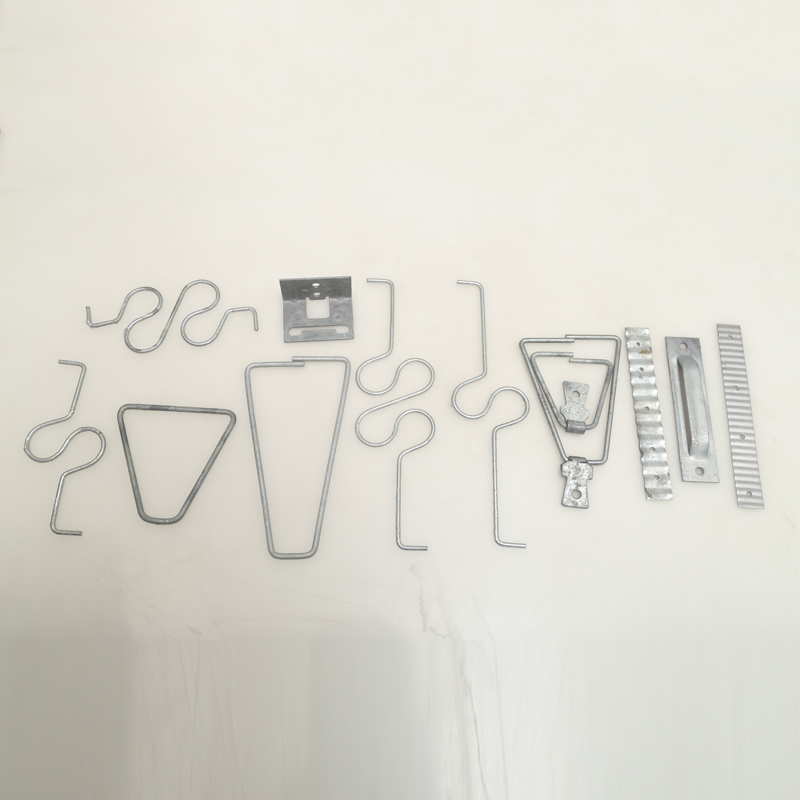
- Mobile Phone
- +8613931874955
- sales@cntcmetal.com
Exploring the Structural Importance of Masonry Triangle Ties in Building Construction Techniques
The Importance of Masonry Triangle Ties in Structural Integrity
Masonry structures, known for their durability and aesthetic appeal, rely significantly on the proper use of ties and reinforcements to maintain their integrity and stability. Among the various types of ties utilized in masonry construction, triangle ties have emerged as crucial components in ensuring the strength and resilience of masonry walls. This article explores the significance of masonry triangle ties, their applications, and how they contribute to the overall stability of structures.
Understanding Masonry Triangle Ties
Masonry triangle ties are typically triangular-shaped metal components that connect masonry walls to structural supports, such as framing or additional masonry elements. These ties are designed to enhance the bond between different materials, providing additional support to withstand various stresses that a building might encounter, including wind loading, seismic activity, and temperature fluctuations.
The triangular shape of these ties offers several advantages. First, the geometry distributes loads more evenly across the connection points, minimizing points of failure. This shape also facilitates quicker installation compared to other types of ties, making them a preferred choice among masonry contractors.
The Role of Triangle Ties in Structural Integrity
One of the primary functions of masonry triangle ties is to prevent movement between connected components. In fluctuating environmental conditions, masonry structures can expand or contract, potentially leading to cracking or separation. Triangle ties help mitigate these risks by anchoring walls securely to their supporting frameworks, thus maintaining alignment and structural integrity.
Furthermore, triangle ties play a vital role in load distribution. When subjected to lateral forces, such as high winds or seismic events, masonry walls can experience shear forces that may compromise their stability. Triangle ties provide an additional layer of strength, helping to transfer these forces through the structure and minimizing the likelihood of catastrophic failure.
masonry triangle ties

Applications of Masonry Triangle Ties
Masonry triangle ties are versatile and can be used in various applications. In residential construction, they are commonly used to secure brick or stone veneer to wood framing. In commercial buildings, you might find them anchoring curtain walls made of masonry materials to steel supports. Their usage is not limited to new constructions; they are also invaluable in retrofitting and repairing existing masonry structures, ensuring they meet updated structural codes and safety standards.
Moreover, triangle ties can also be advantageous in particular architectural designs. For instance, in restoring historical buildings, where maintaining the original appearance is essential, triangle ties can provide necessary support without compromising the aesthetic value of the structure.
Best Practices for Installation
For masonry triangle ties to function effectively, proper installation is crucial. It is recommended that tie spacing be carefully calculated based on the wall height and local building codes. Additionally, ties should be embedded correctly in mortar joints and connected securely to both masonry and framing components. Regular inspections should also be conducted to ensure that the ties remain intact and that no signs of deterioration are present.
Conclusion
In summary, masonry triangle ties are indispensable elements in modern construction. They not only enhance the structural integrity of masonry walls but also contribute to the longevity and safety of buildings. As construction practices evolve, the use of innovative reinforced materials and techniques will continue to play a vital role in ensuring that structures remain resilient against the tests of time and environmental factors. By understanding the significance of masonry triangle ties, engineers and builders can make informed decisions that uphold safety and performance standards in their projects.
share:
-
Your Source for Concrete Wall Ties and Masonry AccessoriesNewsJul.10,2025
-
Unlocking the Power of Iron Wire for Every ProjectNewsJul.10,2025
-
Explore Advanced Chain Wire and Stainless Steel Mesh FencingNewsJul.10,2025
-
Discover the Benefits of Annealed Wire ProductsNewsJul.10,2025
-
Discover China Stainless Steel Wire Mesh SolutionsNewsJul.10,2025
-
Build with Confidence Using High-Performance Masonry AccessoriesNewsJul.10,2025
-
Why Sacrificial Formwork Is Redefining Underground ConstructionNewsJun.06,2025



















